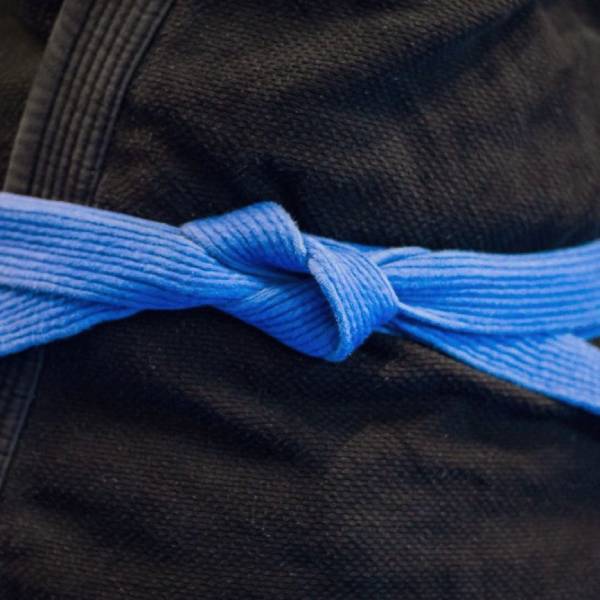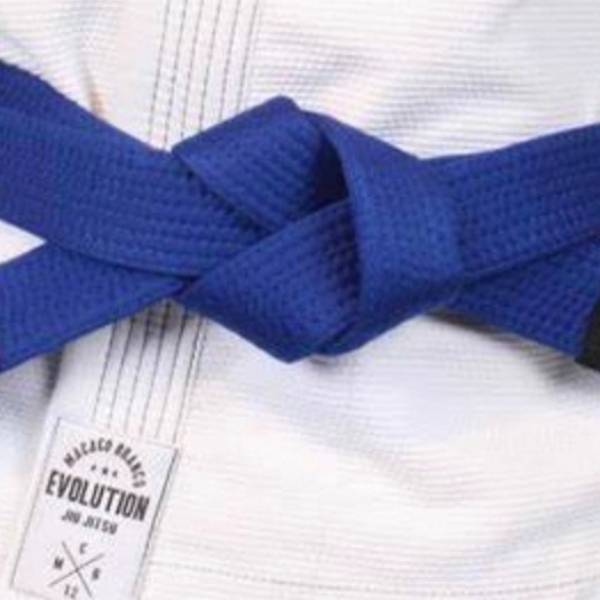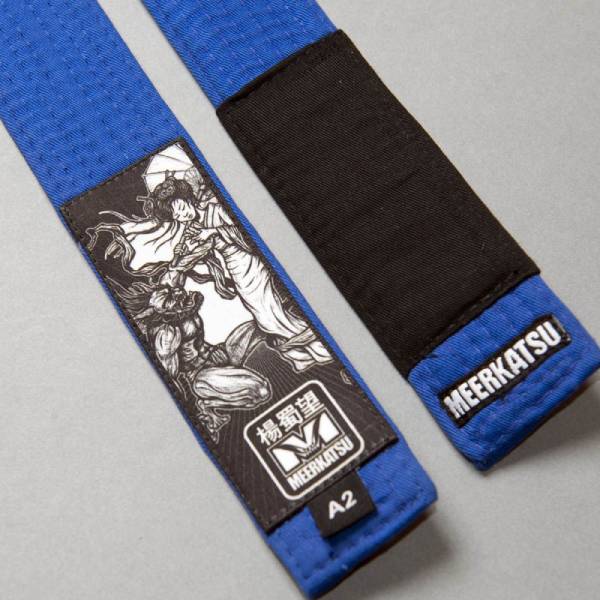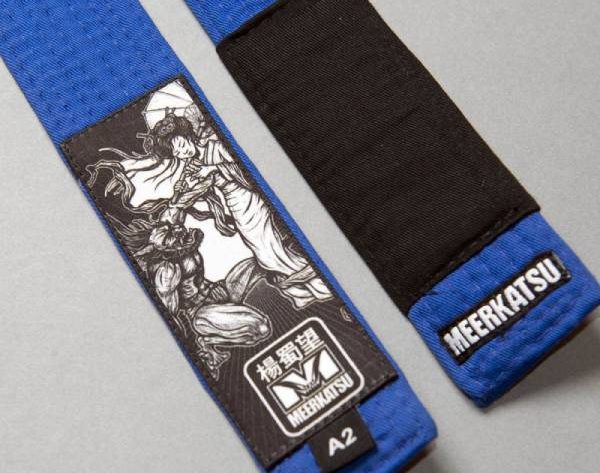Brazilian Jiu-Jitsu (BJJ) is an art that emphasizes the importance of skill, technique, and perseverance. Achieving a blue belt is a significant milestone in your BJJ journey. The BJJ blue belt requirements can vary subtly among different academies, but several core elements remain consistent across the board. This article will explore these requirements in detail.

Understanding BJJ Blue Belt Requirements: The Basics
To earn your blue belt in Brazilian Jiu-Jitsu, you need a solid grasp of fundamental techniques. First, you must master basic positions, such as guard, side control, and mount. These positions form the foundation of your grappling game, so practicing them regularly is essential. Furthermore, the ability to execute common submissions enhances your skill set. Knowing how to apply rear-naked chokes and armbars gives you a strategic advantage in sparring sessions. When you feel confident in these areas, you demonstrate readiness for the next level.
Evaluation and Promotion
Your instructor plays a crucial role in your journey toward the blue belt. They will assess your proficiency in the techniques you have learned. This evaluation process typically involves practical demonstrations and sparring. Your instructor looks for fluidity and control in your movements.
Additionally, you must show a clear understanding of timing and distance. If you excel in these evaluations, your instructor might promote you to blue belt. Achieving this rank is not just about skill; it also reflects your commitment to learning. Consequently, dedication in practice sessions and respect for training partners become vital as well. Embrace challenges, and keep pushing boundaries to grow in your BJJ journey. With perseverance and hard work, you can achieve your blue belt and continue advancing in this martial art.
BJJ Blue Belt Requirements: Time Commitment

Time commitment significantly influences your journey in Brazilian Jiu-Jitsu (BJJ). Practitioners typically spend one to two years training regularly before earning their blue belt. This consistent training not only helps you build essential techniques but also deepens your understanding of the sport. You repeat moves and drills in each session, which helps solidify your skills. As you train more, the subtleties and strategies of BJJ become clearer. Consequently, your ability to execute techniques with precision improves significantly.
Perseverance and Progress
Reaching the blue belt requires dedication, perseverance, and a strong mindset. Training multiple times a week fosters an environment for growth and learning. Each class presents new challenges, which encourages you to push your limits. Additionally, sparring with different partners helps you adapt and refine your skills. As you progress, you will encounter various styles and approaches, enhancing your versatility.
Moreover, the journey involves both physical and mental development. As you overcome obstacles, you gain confidence and resilience. Thus, your commitment not only shapes your BJJ capabilities but also enriches your character. Ultimately, embracing this process of learning leads to significant personal growth.
Sparring Experience: A Crucial Requirement
While mastering drilling techniques is crucial, live sparring brings another essential component to your training. Sparring immerses you in dynamic situations, where you can apply techniques against real opponents. This experience sharpens your ability to adapt as your opponent reacts. Moreover, it enhances your skills by forcing you to think critically in challenging moments. Regularly engaging in sparring sessions fosters resilience, allowing you to face adversity on the mat. Such experiences not only build confidence but also reveal aspects of your game that need more work. This feedback is invaluable for your growth as a practitioner.

Building Confidence Through Experience
Incorporating sparring into your routine prepares you for promotion while enriching your understanding of Brazilian Jiu-Jitsu. Each match presents unique challenges, pushing you to refine your strategies and techniques. You’ll notice changes in your timing and distance, which evolve through consistent practice. Furthermore, sparring with various partners exposes you to different styles and approaches.
This diversity strengthens your adaptability and enhances your overall skill set. As you face different opponents, you cultivate a sense of community while developing your identity on the mat. Engaging in sparring serves as a reminder of your progress and growth as a martial artist. Thus, committing to this practice is crucial for your journey toward the blue belt and beyond. Embracing the diversity of sparring opponents not only helps you cultivate community but also prepares you for the various challenges that come with advancing through martial art belt colors, ultimately enriching your journey as a martial artist.
Demonstrating Knowledge and Practical Skills
Mastering Brazilian Jiu-Jitsu (BJJ) involves more than just physical practice. While sparring builds your skillset, knowledge plays a vital role. Your instructor may ask you to explain specific techniques during evaluations. This requirement pushes you to think critically about what you practice daily. It’s essential to articulate these techniques clearly.
You should focus on both verbal explanations and written descriptions. Such articulations demonstrate your understanding of BJJ’s principles. Discussing techniques with peers can strengthen this understanding further. You cultivate a deeper grasp of the art as you explain to others. This interactive process solidifies your knowledge, making you a more effective practitioner. To effectively grasp the principles of BJJ, it’s essential to engage in discussions and share your understanding with others; many practitioners wonder how long does it take to get a purple belt in BJJ, but the journey is about deepening your knowledge through interaction and explanation.
Teaching Others
Teaching can significantly enhance your BJJ journey. When you instruct fellow students, you gain new insights into techniques. This experience often exposes gaps in your own understanding. You realize areas where you may need to improve. Moreover, teaching fosters communication skills that are crucial in the dojo. Effective communication builds rapport with your training partners. You create a supportive learning environment for yourself and others.
Engaging others in grappling discussions can deepen your comprehension. You also engage more fully with different perspectives and techniques. Thus, balancing practical skills with theory strengthens your overall proficiency. By focusing on both aspects, you prepare yourself for the blue belt transition. Your journey extends beyond the mat, enriching your martial arts experience. As you prepare for the purple belt in jiu jitsu, immersing yourself in diverse discussions and honing both practical skills and theoretical understanding will not only enhance your technique but also deepen your overall martial arts journey.
Attitude and Mat Etiquette: Non-technical Requirements
BJJ blue belt requirements go beyond mere technical skills. Your attitude on and off the mat plays a crucial role. Respect for your instructors and fellow students is vital. Good mat etiquette fosters a positive training environment. Additionally, your willingness to help others and share your knowledge reflects your growth as a martial artist. These non-technical aspects significantly influence your promotion to blue belt.
Competing: An Optional Yet Valuable Experience
While competition is not an official requirement for obtaining a blue belt, it offers valuable experience. Competing exposes you to various styles and techniques. It helps you gauge your progress and test your skills against others. Many academies encourage students to participate in competitions. This involvement can further enrich your training and accelerate your growth in Brazilian Jiu-Jitsu.
Evaluating Progress: Regular Feedback
Regular feedback from your instructors forms another important component of the BJJ blue belt requirements. You should engage in an ongoing dialogue with your instructors to assess your progress. They offer insights into areas where you excel and where you need additional focus. This feedback becomes invaluable as you prepare to meet the requirements for your blue belt.
Conclusion: Embracing the Grassroots of BJJ
Achieving your blue belt in Brazilian Jiu-Jitsu is a fulfilling journey. To meet the BJJ blue belt requirements, focus on developing technical skills, gaining sparring experience, and cultivating a positive attitude. Remember that each person’s path is unique, and your progression will depend on your dedication and effort. Embrace the learning process, and you will find that your blue belt is just the beginning of a lifelong adventure in martial arts.
By understanding these requirements and applying them consistently, you will be well on your way to earning your blue belt in Brazilian Jiu-Jitsu. Enjoy the journey, and always strive for improvement.




